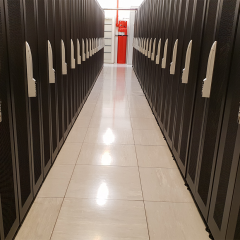HPE Synergy ‘Unable to Apply Local Storage Settings’
KB ID 0001497 Problem While deploying some Blade severs, I was unable to get the ‘Local’ storage on the blades themselves to configure, (when setting up the server profiles). They were throwing this error; Unable to apply local storage settings on server (Enclosure-name}, bay {number} because HPE OneView cannot communicate with the integrated Smart Array controller : Locked. Resolution Ensure that there is an integrated...
Backup Exec – Using RDX Drives
KB ID 0000578 Problem While I like RDX drives, (they have advantages over magnetic tape), but they do have a drawback, throughput. As you can see the removable drive/cartridges are just 1TB SATA Drives in a protective jacket, with a “write protection switch” on them. So they should be perfect as a backup medium, the problem is, the drive carrier itself runs off the USB bus, so they can’t run faster than 48MB a second...
Dell PowerEdge – PERC RAID Card Importing / Using ‘Foreign’ Disks
KB ID 0000639 Problem I bought some SAS disks from eBay to go in my Power Edge 2900 Server, and scratched my head for a while trying to get the PERC RAID controller to use them. I could only see them marked as ‘Foreign’. Probably because they did not have their original config ‘wiped’ off them before I bought them. Solution 1. Boot the server, Press CTRL+R when prompted, then press ‘C’ to enter the...


